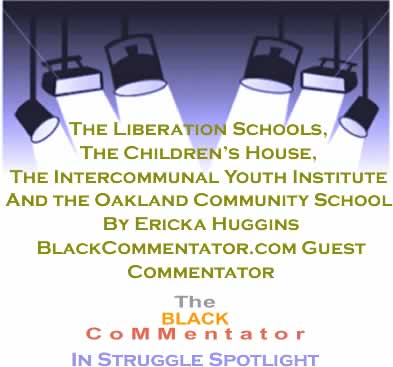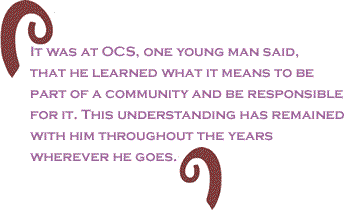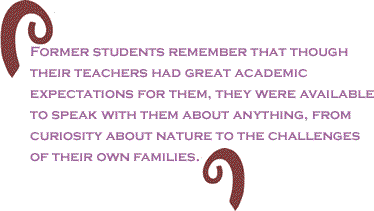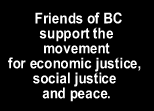
|
||||||||||||||||||||||
 |
||||||||||||||||||||||
 |
||||||||||||||||||||||
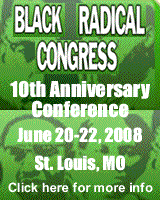 |
||||||||||||||||||||||
 |
||||||||||||||||||||||
 |
||||||||||||||||||||||
 |
||||||||||||||||||||||
 |
| The current issue is always free to everyone |
|
|
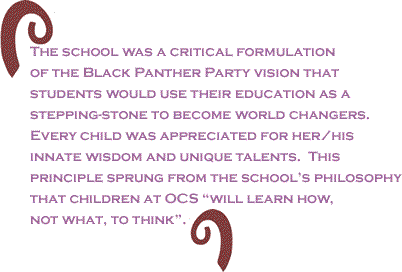 |
The Oakland Community School (OCS) was one of the most well-known and well-loved programs of the Black Panther Party. Point Five of the Black Panther Party’s original 1966 Ten Point Platform and Program, emphasized the need to provide an education that, among other things, taught African American and poor people about their history in the United States. To this end, the Oakland Community School became a locale for a small, but powerful group of administrators, educators, and elementary school students whose actions to empower youth and their families challenged existing public education concepts for black, brown and other poor and racially marginalized communities during the 1970s and 1980s. Historically, however, the educational programs of the BPP started, long before the OCS, with the vision of the party’s leaders. As early as 1967 Huey Newton and Bobby Seale began speaking to high school youth at San Francisco/Bay Area public schools. In 1969, in US cities where there were strong BPP chapters, liberation schools, staffed by volunteer party members, opened in storefronts, churches and homes. These after school programs were created to give academic support to black and other poor youth. These community school programs created a forum for young people to explore a factual history of America and a sense of connection, community. In
1970, in Oakland, David Hilliard created the idea for the first
full time liberation day school. This school, and its attendant
dormitories in Oakland and Berkeley, was simply called the Children’s
House. This In 1971 this school moved into a large building in Berkeley and then to the Fruitvale area of Oakland. The Children’s House was eventually renamed the Intercommunal Youth Institute (IYI). Under the leadership of Brenda Bay, the IYI served BPP families and a few nearby families in the Fruitvale area, maintaining a day school program and dormitory with 50 children, for two years.
In
September of 1974 Oakland Community School (OCS) opened its
doors at 6118 East 14th Street (International Boulevard) in
East Oakland. Starting with 90 children, the school’s
enrollment quickly OCS advanced in the Oakland/East Bay community, supported by community leaders and families, and became an identifiable and replicable educational model. The school was a critical formulation of the Black Panther Party vision that students would use their education as a stepping-stone to become world changers. Every child was appreciated for her/his innate wisdom and unique talents. A guiding and global principle of the school was The World is Our Classroom. This principle sprung from the school’s philosophy that children at OCS “will learn how, not what, to think”.
The students remember starting the day with a ten minute exercise program. Breakfast, followed by a short, school wide interactive check-in preceded the morning classes. A nutritious lunch at midday and ten minutes of meditation in the early afternoon was followed by classes for the older children and rest for the smaller ones. Dinner concluded the day and the school vans transported the children who could not walk to their homes.
The students remember their teachers and the school staff: Lorene Banks, Melvin Dickson, Haven Henderson, Vivette Miller, Rodney Gillead, Pam Ward, Joe Abron, Linda Dunson, Amar Casey, Steve McCutchen, Tommye Williams, Carol Granison, Charles Moffitt, Frank Kellum, Adrienne Humphrey and many more. The curriculum written by Donna and Ericka with the support of Dr. William Moore was student-centered. Math, English and Spanish language instruction, Creative Writing, Physical Education, including Martial Arts, led by Sifu Steve, was the base of the class schedule. Art, Music and Drama were also a priority. These classes culminated in school-wide performances, written by students, twice a year. Great
human beings, poets, artists and activists such as Rosa Parks,
Cesar Chavez, Maya Angelou, James Baldwin, Sun Ra and Richard
Pryor The value of the BPP education programs do not rest with what the early Liberation Schools, the Children’s House, the IYI or the OCS were able to do between 1969 and 1982. The legacy that was passed on through the vision and philosophy of the BPP, to the IYI and OCS staff continues to live on. The legacy lives in the hearts of the children who were taught then and will continue to live on in the generations of children they touch. Currently Ericka Huggins is a professor in Women’s Studies at California State University, East Bay and brings her legacy of spiritual activism and social justice to her teaching. A sought-after speaker for classroom, conference panels and television, Ericka’s recent lectures include Stanford University, Cornell University, U.C.L.A., U.C. Berkeley, Swarthmore College, San Francisco City College and Laney College. A mother of three, grandmother of two, she lives in Oakland, California. Ericka Huggin's political activism began in 1963, when she attended the March on Washington and committed to moving from the sidelines to the frontlines in the global human rights movement. In 1969, at age 18, she became a leader in the Los Angeles chapter of the Black Panther Party with her husband John Huggins. Three weeks after the birth of their daughter Mai, Ericka became a widow at age 19, when her husband John Huggins, along with Alprentice "Bunchy" Carter, was gunned down on the U.C.L.A campus. Ericka brought her husband’s body to New Haven, Connecticut for burial, and stayed on to open a new Black Panther Party chapter. BlackCommentator.com Guest Commentator, Ericka Huggins was a member of the Black Panther Party (BPP) for 14 years. After returning from trial in 1971, she was given the title Minister of Education. From 1973-1981 she was the Director of the Oakland Community School. Click here to contact Ms. Huggins.
|
Any BlackCommentator.com article may be re-printed so long as it is re-printed in its entirety and full credit given to the author and www.BlackCommentator.com. If the re-print is on the Internet we additionally request a link back to the original piece on our Website. Your comments are always welcome. eMail
re-print notice
If you send us an eMail message we may publish all or part of it, unless you tell us it is not for publication. You may also request that we withhold your name. Thank you very much for your readership. |
|
| June
19, 2008 Issue 282 |
|
| Executive Editor: Bill Fletcher, Jr. |
| Managing
Editor: |
| Publisher: Peter Gamble |
| Est. April 5, 2002 |
| Printer Friendly Version in resizeable plain text format or pdf format. |
 |
 |
 |
| |
| |





















